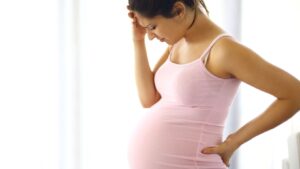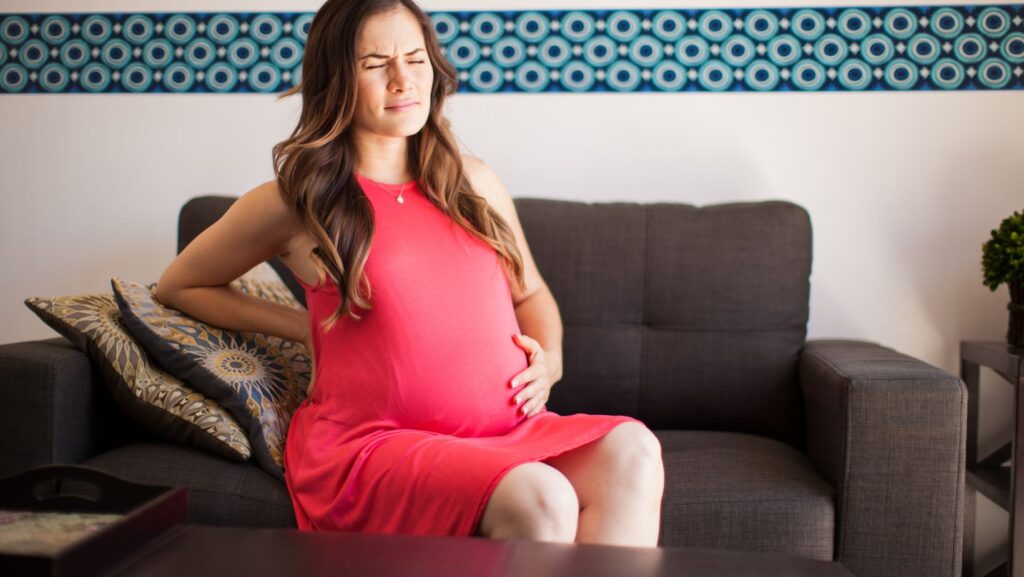Pregnancy is a beautiful journey, filled with anticipation and joy. But let’s face it, it can also bring along some not-so-pleasant companions like lower back pain. If you’re nodding along, you’re not alone. Countless expecting mothers grapple with this discomfort. But don’t worry, I’ve got your back, literally!
Diving deeper into this prevalent issue, it’s important to explore the root causes and physiological changes that contribute to lower back pain during pregnancy.
Stretches for Lower Back Pain Pregnancy
 Some key factors contribute to the lower back pain experienced by expectant mothers. Primary among them are hormonal changes, specifically the release of the hormone relaxin. Relaxin loosens the ligaments in the body, preparing it for childbirth. However, this loosening also reduces the support to the back, leading to pain. Another significant cause is weight gain. With the typical pregnancy weight gain ranging from 25 to 35 pounds, the spine experiences increased stress, often resulting in discomfort and aching. Lastly, the position and movement of the baby can also place pressure on the nerves and blood vessels in the back and pelvis, causing pain.
Some key factors contribute to the lower back pain experienced by expectant mothers. Primary among them are hormonal changes, specifically the release of the hormone relaxin. Relaxin loosens the ligaments in the body, preparing it for childbirth. However, this loosening also reduces the support to the back, leading to pain. Another significant cause is weight gain. With the typical pregnancy weight gain ranging from 25 to 35 pounds, the spine experiences increased stress, often resulting in discomfort and aching. Lastly, the position and movement of the baby can also place pressure on the nerves and blood vessels in the back and pelvis, causing pain.
Physiological Changes Causing Lower Back Pain
Besides these factors, there are several physiological changes an expectant mother goes through that can lead to lower back pain. The expansion of the uterus shifts the body’s center of gravity and stretches and weakens the abdominal muscles. This altering of the body’s balance often results in a change in posture and an increase in back strain. Moreover, pregnancy also triggers substantial changes in the circulatory system. Blood vessels and nerves might compress under the increased weight — this frequently results in a lower backache. Finally, alterations in the urinary system may cause back pain. Many women experience fluid retention during pregnancy, which could increase pressure on the nerves and blood vessels in the lower back, leading to discomfort.
It’s needless to say, these causes and changes contribute to an expectant mother’s discomfort. However, knowing what’s causing the pain can be the first step towards managing it effectively. The next several sections will focus on providing you with strategies and exercises, like stretching, that you can incorporate in your routine to alleviate lower back pain.
The Importance of Stretching in Pregnancy
During the dynamic period of pregnancy, I advocate for regular stretching as a powerful lever to control and manage lower back pain. It serves as a key remedy addressing those physiological alterations, instigated by hormonal changes, weight gain and baby’s position, which often lead to discomfort.
How Stretching Helps in Pregnancy
 Primarily, stretching retains and improves the flexibility of muscles in your body. It eases the stress on your lower back and abdominal muscles, which often bear the brunt of changes during pregnancy, thereby reducing discomfort. A specific category of stretches known as ‘gentle stretching exercises,’ such as the Pelvic Tilt or Kegel exercises, focuses on the lower back and abdominal muscles, providing substantial relief from pain.
Primarily, stretching retains and improves the flexibility of muscles in your body. It eases the stress on your lower back and abdominal muscles, which often bear the brunt of changes during pregnancy, thereby reducing discomfort. A specific category of stretches known as ‘gentle stretching exercises,’ such as the Pelvic Tilt or Kegel exercises, focuses on the lower back and abdominal muscles, providing substantial relief from pain.
Moreover, regular stretching alleviates fluid retention, a common issue in pregnancy. It does it by promoting increased blood circulation and lymph flow reducing swelling, and associated pain around the lower back region. By focusing on your posture during stretching, the body’s shifting center of gravity, a significant challenge during pregnancy, isn’t as destabilizing and manages the intensity of back pain.
Benefits of Stretching for Lower Back Pain
In the context of lower back pain, stretching offers compelling benefits. For starters, back stretches help restore the strength and flexibility of the muscles, empowering them to cope with the extra weight of pregnancy. By making these muscles more resilient, stretching diminishes the risk of straining them.
Secondly, stretching exercises improve the functionality of your circulatory system. The exercises boost blood flow to your tissues, providing them with oxygen and nutrients essential for their recovery. Thus, stretches play a key role in recovering sore muscles and, in turn, diminishing lower back pain.
Lastly, routine stretching fosters better posture throughout pregnancy. Since the growing belly shifts your center of gravity forward, it leads to an unwanted bending at the lower back, causing pain. However, stretching bolsters the weakened abdominal muscles, aiding them to counterbalance, and this move helps correct your posture, decreasing stress on your lower back.
